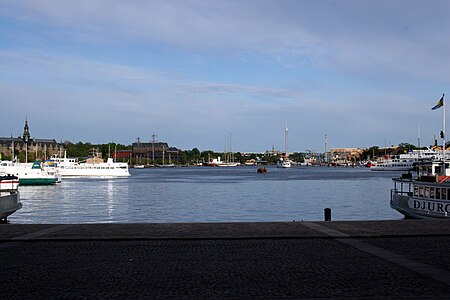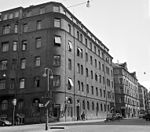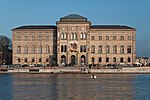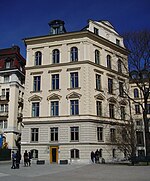Nybroviken
Geography of Stockholm

Nybroviken (Swedish for "New Bridge Bay") is a small bay in central Stockholm, Sweden. Nybroviken separates the city district Östermalm from the peninsula Blasieholmen. North of the bay is Berzelii Park and Norrmalmstorg. To the south Nybroviken connects to the bay Ladugårdslandsviken. Facing both these bays are the quays of Strandvägen and Nybrokajen. The name stems from the historical bridge Ladugårdslandsbron ("Barn's Land's Bridge"), also known as Nybro, which once stretched across the bay to connect to Nybrogatan. Today, Nybroviken is a frequently used departure point for ferries of various sizes bound for Djurgården and the Stockholm Archipelago.
Excerpt from the Wikipedia article Nybroviken (License: CC BY-SA 3.0, Authors, Images).Nybroviken
Nybrokajen, Stockholm Norrmalm (Norrmalms stadsdelsområde)
Geographical coordinates (GPS) Address Nearby Places Show on map
Geographical coordinates (GPS)
| Latitude | Longitude |
|---|---|
| N 59.331111111111 ° | E 18.078888888889 ° |
Address
Hellstrandska huset
Nybrokajen
111 48 Stockholm, Norrmalm (Norrmalms stadsdelsområde)
Sweden
Open on Google Maps










